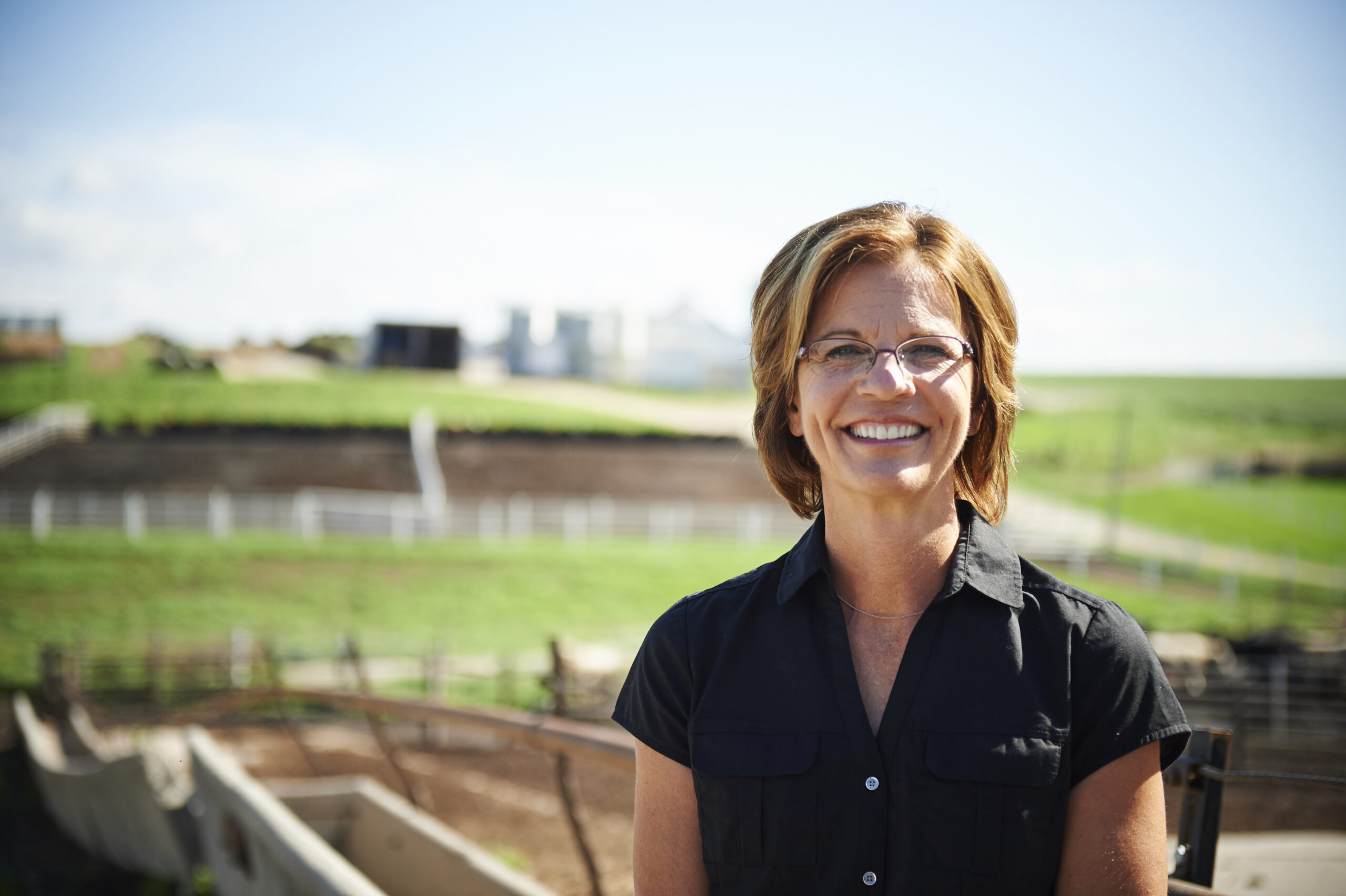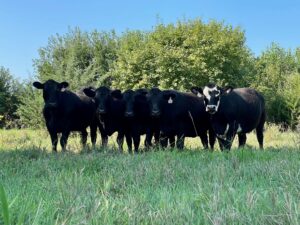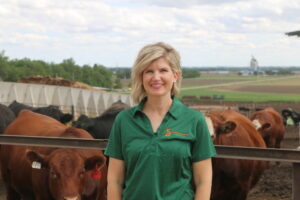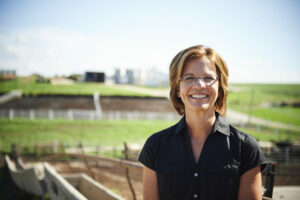My family:
My husband, Steve, and I recently celebrated 40 years of marriage. I am also celebrating over 40 years of life as a woman in agriculture – a farmer.
During my childhood years, I yearned to live on a farm with no real understanding of what it meant to be responsible for the care of crops and cattle. Those first few years of farming were challenging for me as I experienced firsthand the difficulties of a career in agriculture. It would take years of building relationships with the land we farm and the cattle we feed before I could say agriculture was having a positive impact on me personally and the world around me.
Our five children have certainly experienced the positive impacts of agriculture while learning life skills, the value of hard work and how to use innovative ideas to meet ongoing challenges. As our children grew, my role on our farm and in the feedlot became a full-time job. I started connecting the dots and understanding the synergies between cattle, grass, corn and the beautiful way we could produce a super food (a nutrient-dense protein source) to build healthy lives. I witnessed how healthy my own family was because they had beef in their diets.
The environment:
As a volunteer for CommonGround, many of the questions I am asked from consumers revolve around the impact cattle have on the environment through the feed they eat and the methane they emit. Let us look at why cattle are so important to managing our resources and helping us all to thrive.
Cattle have a unique digestive system with four stomachs. One of those stomachs is a big fermentation vat called a rumen. The rumen can digest cellulose like grass and grain to produce milk or build muscle for meat. The relationship of plants and animals to the environment is where this gets exciting. This is where the making of the super food begins.
Plants take CO2 (carbon dioxide) from the atmosphere, and then – through the process of photosynthesis – the plants make carbohydrates, put oxygen back into the atmosphere and store carbon in the soil. When cattle eat plants, those carbohydrates are converted into meat and/or milk. Cattle will belch methane in the process of digestion. That methane goes into the atmosphere as a flow gas breaking down into CO2 in less than 12 years, which then comes down and is absorbed by plants, and the cycle starts again.
The corn plant is one of those plants taking in CO2, emitting O2 (oxygen) and storing carbon. In fact, NASA imagery has shown corn to be emitting about 40% more oxygen than the Amazon Rainforest during its peak growing season in the Corn Belt.
Most of the land we have available for agriculture is considered marginal land, which is not suited to grow any type of crop. Cattle can help us utilize this marginal land through grazing. Professionally managed grazing practices by ranchers also allow wildlife to thrive and reduce the chances of fires. Land that is suited for growing crops has variables including length of growing season, soil type and annual precipitation. When cattle are brought to farms like mine, they utilize crops that grow well where I live, like corn, to produce tender and tasty beef enjoyed around the world.
When row crops like corn are harvested in the fall, many farmers like us plant cover crops. A cover crop is usually some type of grass, such as rye. We plant cover crops to take better care of our soil. Cover crops hold nutrients in the soil, help retain moisture in the soil, reduce runoff, reduce the need for tillage and store more carbon in the soil. We live in hilly terrain and have witnessed the value of cover crops in helping us improve soil and water quality.
Agriculture is a part of our lives 365 days of the year. From food to fiber to fuel, we are all touched by the benefits of agriculture. I have been fortunate to experience the positive impacts of agriculture through my family and my work. My children understand the responsibility we must have for optimal care of our land and our animals.
My work on the farm has given me the ability to see firsthand the positive impact plants and animals have in the carbon cycle while producing high quality food for us to eat. I hope you can see the positive impact agriculture has on your life and the important role agriculture has on improving the health of our planet through the relationship of plants, animals and the carbon cycle.
Recently, my friend Ruth Ready joined me on my farm to discuss the different ways agriculture positively impacts the environment in this video.





